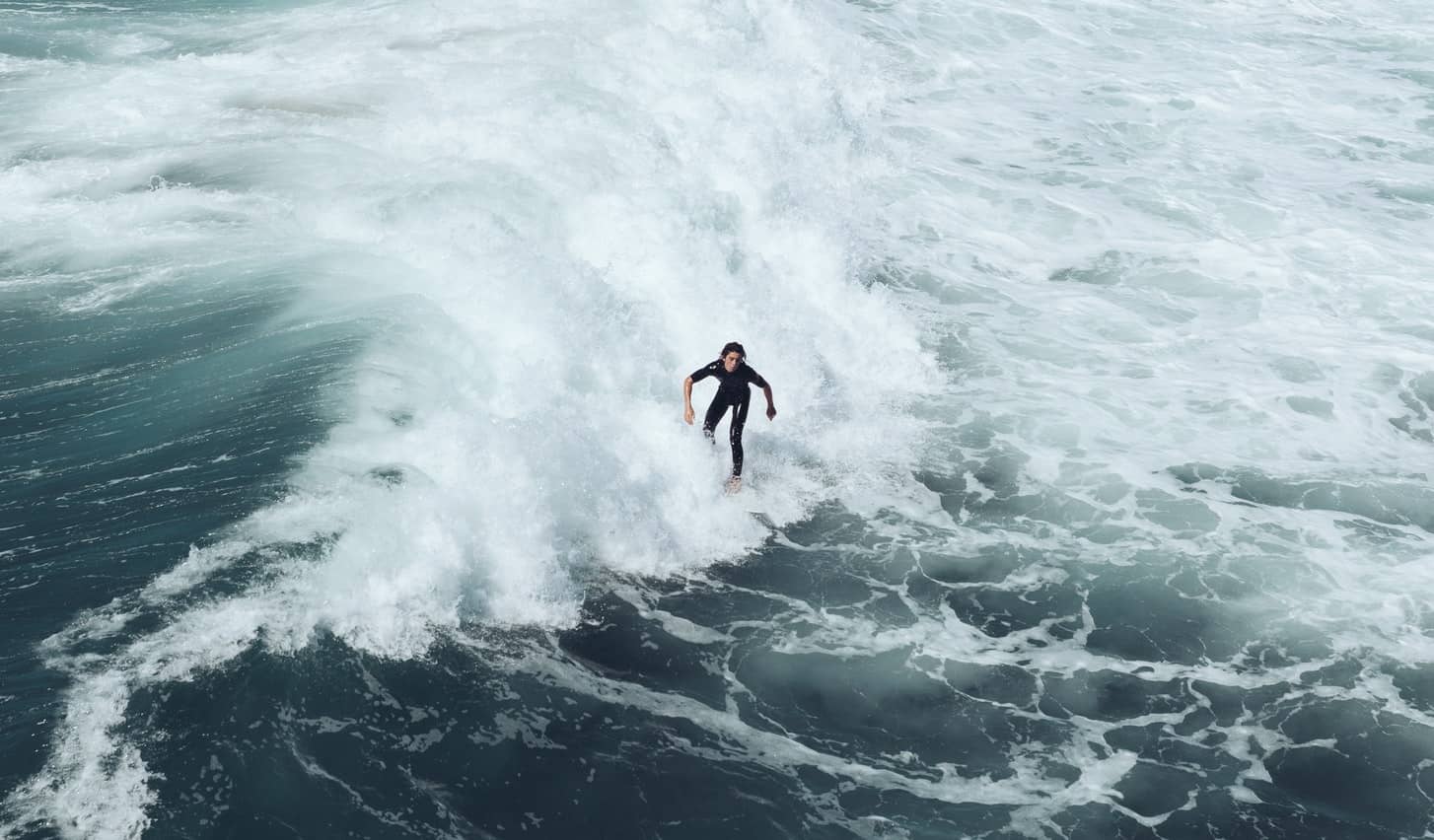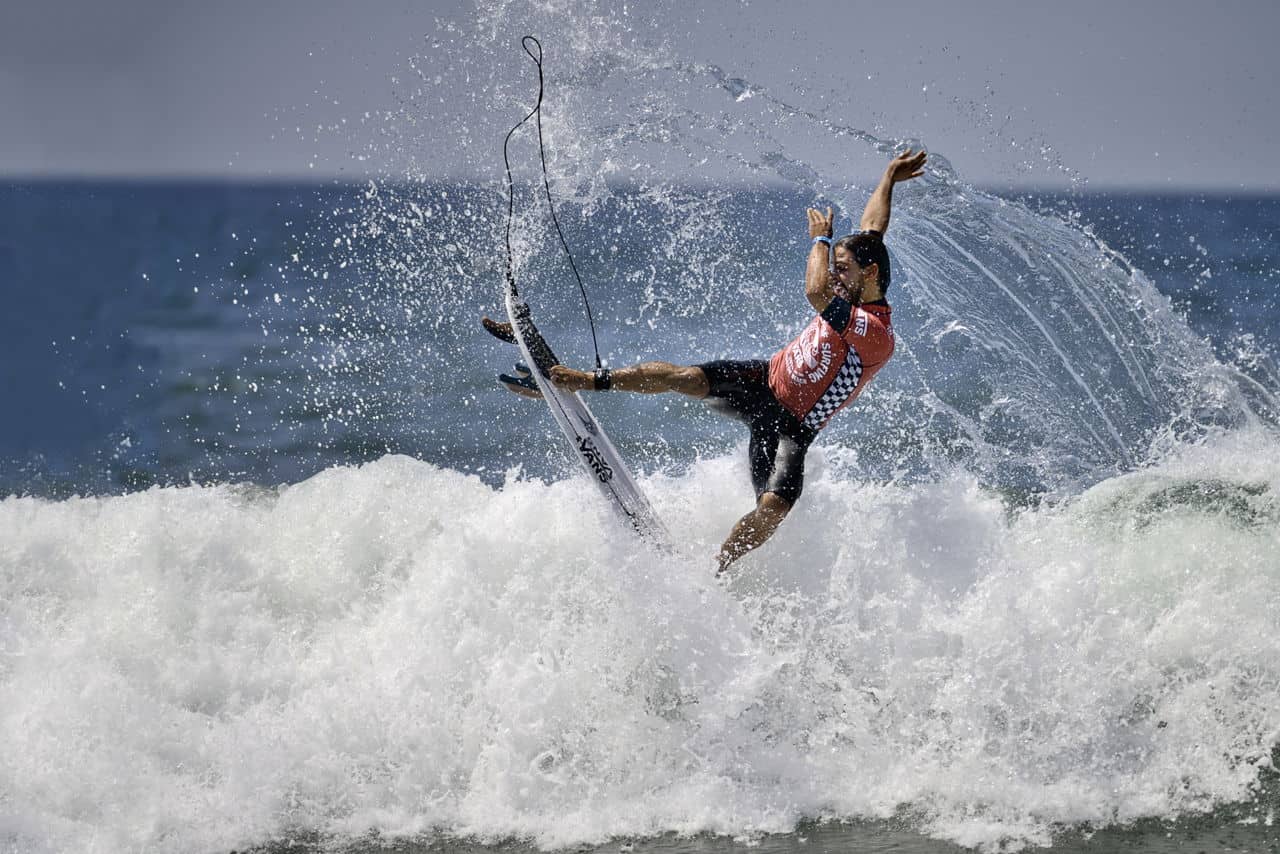When you think of a surfer, more often than not you think of a bronze shirtless guy with long hair. But sometimes going shirtless isn’t optimal for surfing, especially in competitions.
So why do surfers wear shirts world while competing? Pro Surfers wear wicking polyester sports shirts to protect themselves from the sun and board wax to guarantee they surf to their best abilities.
Surfers have to spend a lot of time in the sun by nature but they wear shirts while competing to ensure skin damage from the sun or even from hot board wax doesn’t slow them down.
What’s The Difference Between a Sports Shirt and A Rash Guard?
Swim shirts and rash guards can be very similar, or very different. Some rash guards are constructed from super-strong materials that help athletes avoid skin injuries, while others are made from simpler fabric that provides extra warmth and prevents sunburns – much like a basic swim shirt. Consider your lifestyle and hobbies when deciding what to buy. Rash guards tend to be heavier and more focused on avoiding skin injuries while the main function of a sport shirt is to avoid sun damage.
Though there are many practical reasons to wear rash guards, some prefer shirts because of the comfort factor. When you wear a rash guard consistently you start to get rash on your neck and armpits because of how tight they can be. For many, wearing a shirt is a great way to ease the pain of rash on your neck and armpits, while protecting your back from the harsh sun. The feel of a t-shirt is loose and more flowy to surf in unlike rash guards which can feel restrictive and heavier at times.
Compression garments like swim shirts support muscles and increase blood flow, which may improve athletic performance. This is because swim shirts used for competitive surfing are nearly always skin tight whereas rash guards can have a more relaxed fit and are made to protect the skin from the sun, sand or even a surfboard versus improving sport performance. The average rash guard isn’t as super tight as a sport shirt, so most people will find rash guards more comfortable for everyday wear.
Why Would You Need A Rash Guard To Surf?
Rash guards are most often worn in surfing when the weather is too warm for a wetsuit, and to prevent wax-based chafing from sliding on and off of the surfboard, on either the torso, or the legs. A rash guard helps to prevent irritation caused by rapid impact with surface water and waves as well.
How Long Have Rashguards Been Common Practice?
Rash guards are thought to have originated in Australia, where they are commonly referred to as “rashies” or “rashys”. Variations of the rash guard have made their way into a plethora of other sports including baseball, American football, water polo, grappling, Brazilian jiu-jitsu, and mixed martial arts. Athletes who wear rash guards in MMA/Grappling/BJJ seek protection against cuts, mat burns, and the spread of skin diseases like ringworm.
Other important components of a rash guard include flatlock stitching and six panel construction. Flatlock stitching creates a seam where the seam allowances lies flat to the garment instead of hanging loose from it. This is made by adjusting the overlock or the thread overedge stitch. Flatlock stitching increases the strength of the garment for intense exercise or recreational activities. Six panel construction and different material for separate body parts sewn together in panels allow the user increased mobility wet or dry versus the conventional four-panel tee shirt construction.
The combination of products used to construct a rash guard differ slightly depending on the designer. The use of nylon and spandex create a garment that is lightweight, quick drying, flexible, durable, naturally antibacterial and water wicking.
What Should I Look For When Buying A Rash Guard?
No matter how much of a seasoned surfer you may be, there are still some surfers who struggle to find the right fit when it comes to their rash guard. So don’t fret if you’re struggling to find that perfect fit! If you’re having trouble, it’s important to remember that like anything, rash guards come in a variety of different sizes, styles, fabrics, and even thicknesses, it all really depends on their purpose.
There a few different purposes of a rash guard with the main ones being they offer some warmth in cool waters, sun protection, jellyfish protection, and of course rash protection, hence the name, rash guard. Because surfers tend to lay flat and paddle more than they stand, and this constant movement causes friction, which can often result in skin rashes. You can choose how to wear a rash guard based on your own preference and the conditions you’re surfing in. You might choose it to wear it under your wetsuit for additional warmth or rash protection or you might choose to wear it alone when the weather is more favorable.
When buying a rash guard, it’s important to remember that size matters. Generally speaking, there are two different rash guard fits, skin-tight or loose-fit. Choosing the right rash guard fit has less to do with your body shape or what it will look like on and more related to what you will use the rash guard for. Some complain that baggier rash guards are more prone to giving you rashes due to the rubbing of the slack. Others claim skin tight rash guards are more likely to give you rashes, particularly in the armpit area. It all depends on your body type, skin sensitivity and what feels most comfortable to you.
If you love water sports and are heading off for a bit of surfing, diving or swimming, a skin-tight rash guard that has a snugger fit is better. The rash guard will move with your body, and there will be no excess fabric getting in the way. Skin-tight rash guards also offer you less resistance when you’re in the water, which will make it much easier for you to do your chosen water sport.
On the other hand, if you’re planning on having a good old chiller with out day on your boat with your boys and maybe a few too many cold ones, you’re probably looking for sun protection over anything else. For this, a looser fitting rash guard will be more comfortable and probably suit your needs better, as long as it comes with a UPF 50+ sun protection rating so you and boys aren’t slowed down by those gnarly UV waves.

Why Does Style Matter When Buying A Rash Guard?
Just like all your favorite pieces of clothing, rash guards come in a variety of styles. They’re readily available in short and long sleeves. Choosing the style of your rash guard often depends on where you live and the climate. If you live in an area that’s hotter, long-sleeved rash guards with UPF50+ will protect you more than a short-sleeved rash guard. But, remember you’ll definitely feel the heat more with a tight-fit long-sleeved rash guard unless of course, you’re constantly moving in and out of the water.
Short-sleeved rash guards protect the more delicate areas of the body from the sun such as the back of the neck, chest, and back while allowing you to remain a bit cooler in hotter climes. Different prints and colors on the rash guard will personalize your rash guard, and make you look cool as shit. Many outlets provide unique rash guards with water-inspired prints, so you can not only remain protected but have a totally badass fit on both the beach and in the water.
The material of a rash guard is also very important. Today, there are a number of rash guards on the market, and of course, they all differ in quality. Only buy rash guards made out of UPF50+ fabric. A fabric can be UPF50+ in two ways. It can either be treated or it could have been knit into the fabric itself during the production process. Rash guards are made of a blend of synthetic fibers. This includes spandex, which is stretchy, and polyester, which allows for breathe ability. Look for a rash guard made from a combination of polyester or nylon with elastane, as it has all of the above qualities but is also quick drying.
What’s The Difference Between A Wetsuit And A Rash Guard?
In short, a wetsuit is what surfers wear in the freezing ocean water to stay warm and rash guards are not. Rash guards are not wetsuits. Though they can, they are not specifically designed to keep you warm. In fact, in some ways they’re designed from the exact opposite. Rash guards are designed to help protect yourself from the sun when it’s so hot that you need extra protection.
What Should I Look For When Buying A Wetsuit?
Rash guards are also designed to prevent rashes from the wax and waves your skin encounters while surfing. But first and foremost the rash guard’s primary purpose is to protect the skin from the sun. Wetsuits can be used as rash guards, but never the other way around. In fact, rash guards can potentially make you colder than not wearing one when it’s cloudy and windy out. If you purchase a highly rated UV rash guard, be sure to hand wash it in cold water after every use. But sure to also avoid using detergent as it will remove the protective coating on the shirt.
When buying a wetsuit do not buy anything unless it specifically states that it is designed to keep you warm. This is because wetsuits come in different thicknesses. It is recommended that you look for 3 MM thickness. It’ll keep you much warmer than the thinner 1.5 MM fabric.
Wetsuits also are designed to fit snug and tight. Therefore you should order a size or two too large so that it fits tight, but doesn’t suffocate you. Wetsuits fit tighter dry, but stretch out in the water and over time so it fits more comfortably over time. When determining your wetsuit size, height and chest are the most important measurements. Measure your chest at the widest point, with the tape gently snug. Regarding length, it’s generally ok if the suit is a little on the long side. It’s generally not ok if the suit is too short. It will likely be uncomfortable in the crotch and neck.
So if you’re stuck choosing between two sizes, go with the larger size.
In summary, there are many options to keep your skin safe and your body rocking for a long day on the surf whether you’re a pro or a newbie. Find out which garment fits your needs, weather conditions and personal preference best and get out there! Because when you feel good, chances are you’ll surf good too.

